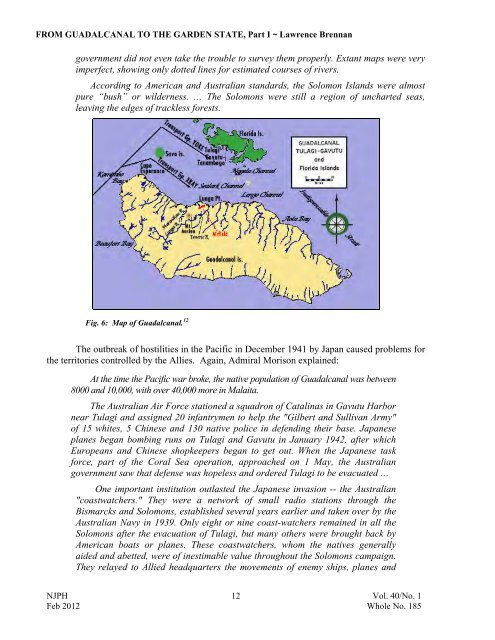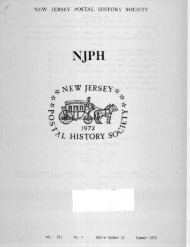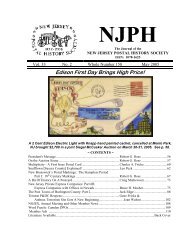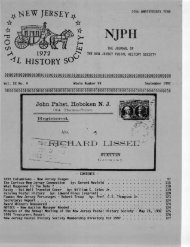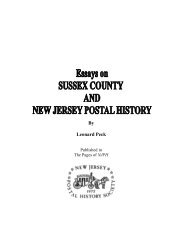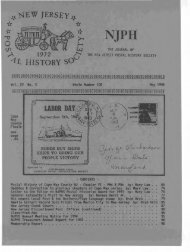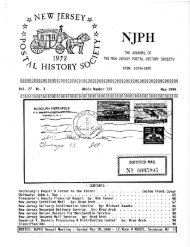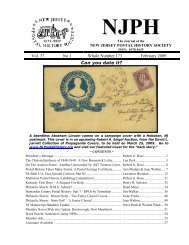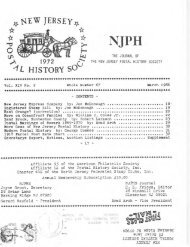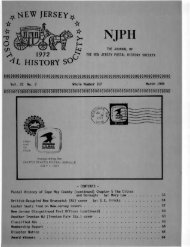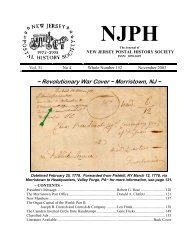185 - New Jersey Postal History Society
185 - New Jersey Postal History Society
185 - New Jersey Postal History Society
Create successful ePaper yourself
Turn your PDF publications into a flip-book with our unique Google optimized e-Paper software.
FROM GUADALCANAL TO THE GARDEN STATE, Part I ~ Lawrence Brennan<br />
government did not even take the trouble to survey them properly. Extant maps were very<br />
imperfect, showing only dotted lines for estimated courses of rivers.<br />
According to American and Australian standards, the Solomon Islands were almost<br />
pure “bush” or wilderness. … The Solomons were still a region of uncharted seas,<br />
leaving the edges of trackless forests.<br />
Fig. 6: Map of Guadalcanal. 12<br />
The outbreak of hostilities in the Pacific in December 1941 by Japan caused problems for<br />
the territories controlled by the Allies. Again, Admiral Morison explained:<br />
At the time the Pacific war broke, the native population of Guadalcanal was between<br />
8000 and 10,000, with over 40,000 more in Malaita.<br />
The Australian Air Force stationed a squadron of Catalinas in Gavutu Harbor<br />
near Tulagi and assigned 20 infantrymen to help the "Gilbert and Sullivan Army"<br />
of 15 whites, 5 Chinese and 130 native police in defending their base. Japanese<br />
planes began bombing runs on Tulagi and Gavutu in January 1942, after which<br />
Europeans and Chinese shopkeepers began to get out. When the Japanese task<br />
force, part of the Coral Sea operation, approached on 1 May, the Australian<br />
government saw that defense was hopeless and ordered Tulagi to be evacuated …<br />
One important institution outlasted the Japanese invasion -- the Australian<br />
"coastwatchers." They were a network of small radio stations through the<br />
Bismarcks and Solomons, established several years earlier and taken over by the<br />
Australian Navy in 1939. Only eight or nine coast-watchers remained in all the<br />
Solomons after the evacuation of Tulagi, but many others were brought back by<br />
American boats or planes. These coastwatchers, whom the natives generally<br />
aided and abetted, were of inestimable value throughout the Solomons campaign.<br />
They relayed to Allied headquarters the movements of enemy ships, planes and<br />
NJPH 12<br />
Vol. 40/No. 1<br />
Feb 2012 Whole No. <strong>185</strong>


